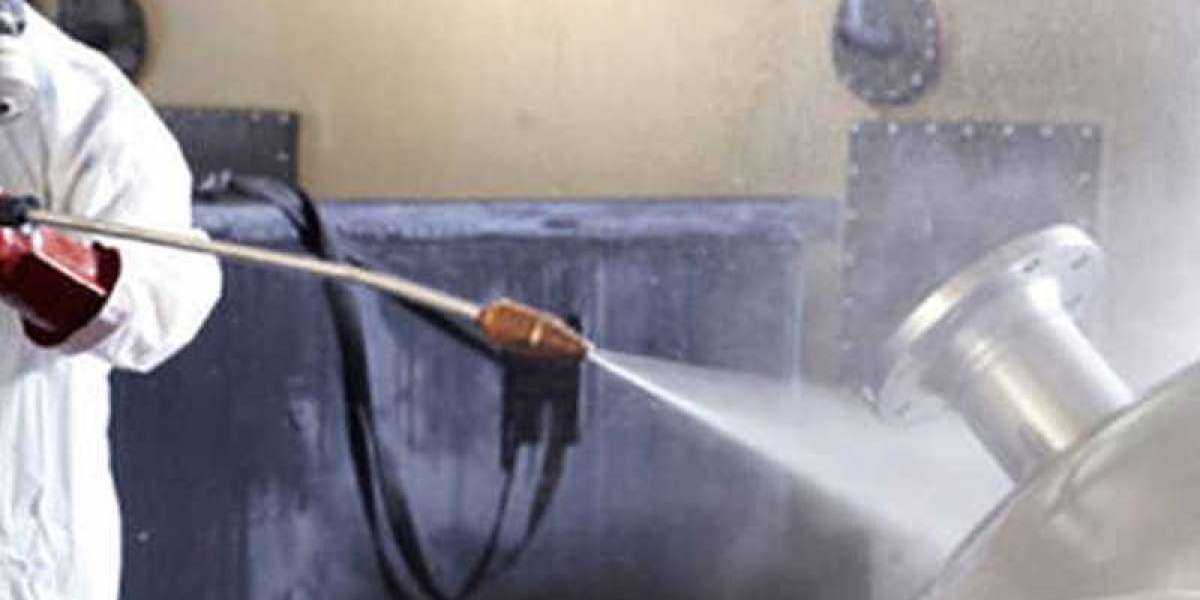Ultimate Guide to Weld Passivation: Enhancing Corrosion Resistance in Stainless Steel Welding
Introduction
Welding stainless steel is essential for numerous industries, but it can compromise the metal’s natural corrosion resistance if not handled properly. During welding, the heat-affected zone (HAZ) experiences intense temperatures that damage the protective chromium oxide layer on stainless steel, making it more vulnerable to corrosion and contamination. Weld passivation is a post-welding process designed to restore and enhance this protective layer, ensuring the welded area is as corrosion-resistant as the base material.
In this guide, we’ll explore what weld passivation is, why it’s important, the methods used, and the benefits it provides in extending the lifespan and performance of stainless steel components.
What Does Weld Passivation do?
Weld passivation is a chemical treatment applied to stainless steel after welding. This process removes contaminants, like free iron particles, and any oxides that formed during welding. Passivation typically uses an acidic solution to dissolve these impurities, which allows chromium in the stainless steel alloy to form a uniform, protective layer of chromium oxide on the metal’s surface. This oxide layer shields the steel from corrosion, enhancing durability and resistance in harsh environments.
Why is Weld Passivation Necessary?
Stainless steel’s corrosion resistance comes from a thin, natural oxide layer on its surface. Welding disrupts this layer, leaving the heat-affected zone (HAZ) prone to contamination. Without passivation, the exposed iron can react with environmental contaminants, like chlorides, and initiate corrosion in the weld area. Once corrosion begins, it can spread, compromising the structural integrity and longevity of the component.
Passivation slows or stops corrosion by:
- Removing iron and oxides: The acidic solution dissolves free iron particles and oxides that may have formed during welding.
- Enhancing chromium oxide formation: Passivation encourages the formation of a denser, uniform layer of chromium oxide that serves as a corrosion barrier.
Common Methods of Weld Passivation
Several passivation techniques are used depending on the type of stainless steel and the specific application:
Chemical Acid Treatment (Nitric or Citric Acid Solutions)
Acid passivation is one of the most common methods. Nitric acid or citric acid solutions are applied to dissolve iron and other impurities while promoting chromium oxide layer formation. This is ideal for restoring weld areas without affecting the stainless steel's integrity.Electropolishing
Electropolishing uses an electric current to smooth and clean the metal surface, removing contaminants and encouraging a uniform chromium oxide layer. This method also gives the metal a polished appearance and is often used in high-purity applications.Mechanical Polishing with Chemical Passivation
Mechanical polishing physically removes the oxide layer and any contaminants from the weld area. After mechanical polishing, an acid passivation treatment is applied to create a new oxide layer. This combined approach is beneficial for achieving a highly resistant, smooth surface finish.Gel Passivation
Gel-based passivation products can be applied directly to welds for a targeted passivation process. These gels contain acids and can be left on specific areas to remove heat-affected contaminants and improve the surface without treating the entire piece.
Steps in the Weld Passivation Process
A typical weld passivation process includes the following steps:
- Surface Preparation: Clean the weld area to remove any visible debris, oils, or welding residues. This ensures even acid exposure during passivation.
- Application of Passivation Solution: Apply the passivation solution (e.g., nitric or citric acid) to the weld area. The solution will dissolve iron particles and impurities.
- Thorough Rinsing: After the solution has treated the surface, rinse the metal thoroughly with deionized or distilled water to remove any acid residues.
- Drying: Fully dry the component to prevent water spots and to avoid introducing any new contaminants.
Benefits of Weld Passivation
Passivation offers several critical advantages:
- Increased Corrosion Resistance: Passivation restores and improves the protective oxide layer, making stainless steel components more resistant to environmental corrosion.
- Extended Component Lifespan: By enhancing corrosion resistance, passivation prolongs the life of stainless steel welds, reducing maintenance needs and costs.
- Improved Aesthetic and Hygiene: Passivated welds not only resist corrosion but also have a smoother, cleaner appearance. In applications where hygiene is critical (e.g., food and pharmaceutical industries), passivation reduces the likelihood of bacterial contamination.
- Reduced Contamination Risk: Passivation removes foreign contaminants, ensuring that the stainless steel maintains its high performance over time.
Testing Weld Passivation Effectiveness
After passivation, there are several ways to verify the effectiveness of the process:
- Copper Sulfate Test: This test checks for iron contamination by applying a copper sulfate solution. If iron is present, it will form a copper deposit, indicating incomplete passivation.
- Salt Spray Test: Exposing the metal to a salt spray tests its corrosion resistance. A properly passivated surface will show minimal to no signs of corrosion.
- Visual and Microscopic Inspection: A visual inspection can reveal any remaining discoloration, while microscopic inspection can confirm the integrity of the oxide layer.
Conclusion
Weld passivation is a vital step for ensuring the long-term performance and durability of stainless steel components. By removing contaminants and restoring the chromium oxide layer, passivation protects against corrosion and extends the lifespan of welded structures. Through understanding and implementing proper passivation techniques, you can improve the quality and reliability of your stainless steel applications, even in challenging environments.
FAQs About Weld Passivation
Is weld passivation always necessary?
For applications where corrosion resistance is critical, passivation is essential after welding. However, it may not be required for components in non-corrosive environments.Can passivation remove all types of weld discoloration?
Passivation removes light discoloration and surface contaminants, but severe discoloration may require additional polishing or pickling.How often should passivation be done on stainless steel components?
Typically, passivation is performed once after fabrication or welding. If a component undergoes heavy cleaning or exposure to contaminants, re-passivation may be necessary.









